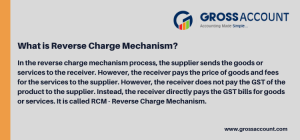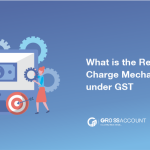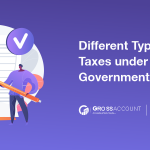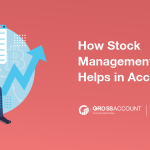Introduction
The Goods and Services Tax (GST) brought about a comprehensive reform in the Indian tax structure, aiming to simplify and streamline the taxation process. GST was introduced in July 2017. Since then the major changes happening in the tax structure of India. However, even in the Union Budget 2023: There are new tax regimes implemented by the Ministry of Finance. But the concept of the Reverse Charge Mechanism works under GST many times. One of the lesser-understood aspects of GST is the Reverse Charge Mechanism (RCM).
In this blog, we will talk about the in-depth concept of the Reverse Charge Mechanism. First, let’s see what is the normal charge mechanism.
What is NCM – Normal Charge Mechanism?
In a normal charge mechanism, the supplier sends the goods or offers services to the receiver. The receiver then pays the price for the goods or fees for the services. But also the receiver pays the GST to the supplier. However, in the end, the supplier is responsible for paying the different GST under the central government tax structure.
Now you understand the normal charge mechanism, now let’s see the reverse charge mechanism under GST.
What is Reverse Charge Mechanism?

In the reverse charge mechanism process, the supplier sends the goods or services to the receiver. However, the receiver pays the price of goods and fees for the services to the supplier. But the receiver does not pay the GST of the product to the supplier. Instead, the receiver directly pays the GST bills for goods or services. It is called RCM – Reverse Charge Mechanism.
The receiver needs to enter the price in the GSTR-1. If you do not know what is GSTR-1 then read our blog on that.
Also Read: What is GSTR1? Who Should File & How to File?
Reverse Charge Mechanism (RCM) applied on which services?
- GTA – Goods Transport Agency
- Director (Company direct pays GST to the govt.)
- Insurance Agent (In that insurance company pay the GST)
- Recovery Agent
- Central or State Government
- RBI (Reserve Bank of India)
- Advocate (Law Firm)
- Arbitribunal
- Copyright
- Sponsorship
RCM applied on which Goods?
Agriculturist
1) Cashewnut
2) Tendu Leave
3) Tambacoo Leave
Whoever purchases these goods from the farmers then only the price paid to the farmer, GST is imposed on the consumer. The same this happen with the Silk Yam.
When is Reverse Charge Applicable?
The Reverse Charge Mechanism comes into play under specific circumstances as prescribed by the GST law. The following scenarios trigger the application of RCM:
Services from an Unregistered Supplier:
If a registered person procures services from an unregistered supplier, they are required to pay the applicable GST under RCM. Therefore, the receiver will be responsible for paying the GST directly rather than the supplier. Registered buyers who must pay GST under reverse charge must do self-invoicing.
Moreover, Reverse charge mechanisms (RCMs) are used to collect CGST and SGST from intra-state purchasers. Interstate purchases also require the buyer to pay IGST. Periodically, the government announces what goods or services are covered by this provision.
The government notified real estate promoters that they must buy inward supplies from registered suppliers to the extent of 80%.
Specified Goods and Services:
The government can notify certain goods and services for which RCM will be applicable, irrespective of the supplier’s registration status. This empowers the government to bring specific transactions under the purview of RCM to prevent tax evasion.
Time of Supply Under RCM
The time at which the liability to pay GST arises is known as the ‘time of supply.’ In the case of RCM, the time of supply is determined differently from the regular mechanism. For goods, it is the earlier of the following dates:
- The date of receipt of goods
- The date of payment
For services, it is the earlier of these dates:
- The date of payment
- The date immediately following 60 days from the date of issue of invoice by the supplier
Registration Rules Under RCM
Regardless of their aggregate turnover, a person who is liable to pay tax under the Reverse Charge Mechanism must register compulsorily under the GST law. Moreover, The RCM ensures that all individuals or businesses liable to pay tax are accounted for and contribute to the tax revenue.
Who Should Pay GST Under RCM?
Under RCM, GST is payable by the recipient of goods or services, making them responsible for complying with tax laws. This shift in liability is designed to capture instances where suppliers are unregistered or where certain goods or services are prone to tax evasion. The recipient is required to calculate the tax liability, pay the GST amount, and report the details in their GST returns.
Input Tax Credit (ITC) Under RCM
One of the concerns businesses may have when dealing with RCM is whether they can claim Input Tax Credit (ITC) for the tax paid under RCM. However, the good news is that businesses can indeed claim ITC for the tax paid under RCM, subject to certain conditions. The ITC claim can be utilized to offset the tax liability on their outward supplies. This prevents a cascading tax effect, where taxes are paid at multiple stages of the supply chain.
However, it’s important to note that ITC cannot be claimed if the goods or services received under RCM are used for non-business purposes. Additionally, ITC can only be claimed if the recipient has paid the tax to the government and has proper documentation to support the transaction.
Conclusion
The RCM is a pivotal component of the GST framework. It is designed to bring transparency and accountability to the taxation process.
The main aim of the RCM is to stop potential loopholes in the tax system and prevent tax evasion. However, that’s why shifting the tax liability from the supplier to the system prevents tax evasion. Businesses should be aware of the scenarios in which RCM is applicable, the time of supply rules, and the registration and ITC implications.
As GST regulations and guidelines may evolve, it’s essential for businesses to stay updated with the latest developments and interpretations. GrossAccount offers you GST accounting software that helps your business stay up-to-date with the dynamic structure of taxes.






